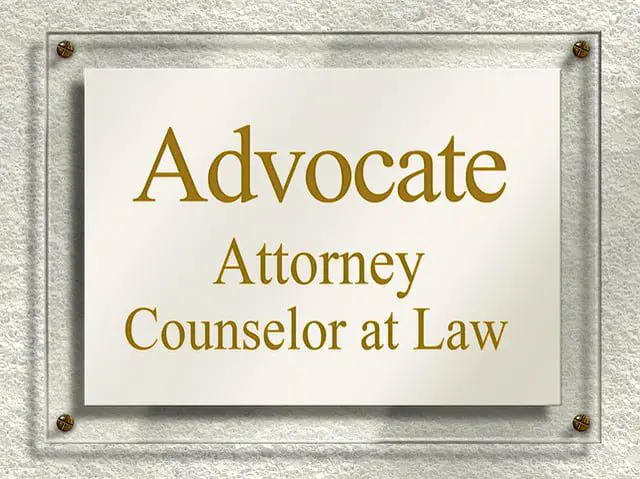Child abuse is a grave violation of a child’s rights, encompassing physical, emotional, sexual abuse, and neglect. Understanding the protección jurídica and knowing how to report child abuse are crucial steps in safeguarding children. This comprehensive guide explores the legal aspects of child abuse, including protections, reporting mechanisms, and preventive measures.
Understanding Child Abuse
Child abuse can take many forms, each with specific signs and symptoms that caregivers, educators, and professionals need to recognize:
1. Physical Abuse: This involves inflicting physical injury upon a child. Signs include bruises, burns, fractures, and other unexplained injuries.
2. Emotional Abuse: Emotional abuse includes verbal assaults, threats, and rejection. It can result in anxiety, depression, withdrawal, and decreased self-esteem in children.
3. Sexual Abuse: Sexual abuse involves any sexual activity with a child. Indicators include difficulty walking or sitting, knowledge of sexual acts inappropriate for their age, and reluctance to be left alone with certain individuals.
4. Neglect: Neglect is the failure to provide for a child’s basic needs. Signs include poor hygiene, malnutrition, unattended medical needs, and lack of appropriate supervision.
Legal Protections for Children
Several legal frameworks are in place to protect children from abuse and ensure their well-being:
1. Child Protective Services (CPS): CPS agencies exist in every state to investigate reports of child abuse and provide services to protect children. They work with law enforcement, healthcare providers, and social services to address cases of abuse.
2. Mandatory Reporting Laws: Many jurisdictions have mandatory reporting laws requiring certain professionals, such as teachers, doctors, and social workers, to report suspected child abuse. Failure to report can result in legal consequences for the mandated reporter.
3. Federal Laws: In the United States, laws such as the Child Abuse Prevention and Treatment Act (CAPTA) provide federal funding to states for child abuse prevention, assessment, investigation, prosecution, and treatment activities.
4. State Laws: Each state has its own child abuse laws, defining what constitutes abuse, establishing reporting requirements, and outlining penalties for abusers. Understanding the specific laws in your state is crucial for effectively addressing child abuse.
Reporting Child Abuse
Reporting child abuse is a critical step in protecting children and ensuring they receive the help they need. Here are the steps to take when you suspect child abuse:
1. Recognize the Signs: Be aware of the signs of child abuse, as outlined above. Trust your instincts if you believe something is wrong.
2. Document Evidence: Collect as much information as possible, including dates, times, descriptions of incidents, and any physical evidence such as photographs. This documentación will be crucial for investigators.
3. Contact Authorities: Report your concerns to local Child Protective Services (CPS) or law enforcement. Provide them with all the information you have gathered. CPS agencies have hotlines that you can call to report abuse.
4. Follow Up: Stay in contact with the authorities and follow up on the report to ensure that the case is being investigated. Be prepared to provide additional information if needed.
5. Seek Legal Advice: Consult with an attorney who specializes in family law or child protection law to understand your legal options and rights. Legal professionals can provide guidance on how to navigate the reporting process and ensure the child’s protection.
Case Studies: Legal Protections in Action
Success Story: Emily, a school teacher, noticed unusual bruises on one of her students and reported it to CPS. The investigation revealed that the child was being physically abused at home. The authorities intervened, and the child was placed in a safe environment. Emily’s vigilance and prompt reporting helped protect the child from further harm.
Challenge Example: John, a neighbor, suspected that a child in his apartment complex was being neglected. Despite multiple reports to CPS, the case was closed due to lack of evidence. This situation highlights the challenges in documenting and proving neglect, emphasizing the need for thorough investigation and support.
Comparative Analysis of Child Abuse Laws
Child abuse laws vary significantly by jurisdiction, reflecting different legal frameworks and cultural attitudes towards child protection:
1. United States: In the U.S., child abuse laws are comprehensive, with federal acts like CAPTA and state-specific laws. Mandatory reporting is common, and CPS agencies play a crucial role in investigating and addressing abuse.
2. United Kingdom: The UK has robust child protection laws, including the Children Act 1989, which mandates local authorities to protect children at risk. The National Society for the Prevention of Cruelty to Children (NSPCC) provides additional support and resources.
3. Australia: Australia’s approach to child protection involves a combination of federal and state laws. The Children and Young Persons (Care and Protection) Act 1998 outlines the responsibilities of various agencies in safeguarding children.
Understanding these differences is essential for addressing child abuse effectively, especially in multicultural or international contexts.
Detailed Breakdown of Legal Consequences
Legal consequences for child abuse are designed to protect victims and punish offenders:
1. Criminal Penalties: Perpetrators of child abuse can face criminal charges, including asalto, sexual abuse, and neglect. Penalties may include fines, imprisonment, and mandatory counseling or rehabilitation.
2. Civil Penalties: Victims of child abuse can file civil lawsuits to seek compensation for damages, including medical expenses, pain and suffering, and punitive damages. Civil cases can provide financial relief and hold abusers accountable.
3. Protective Orders: Courts can issue medidas cautelares to prevent abusers from contacting or coming near the child. This ensures the child’s safety and provides legal recourse if the abuser violates the order.
Step-by-Step Guide to Reporting Child Abuse
1. Identify and Document: Recognize the signs of child abuse and document your observations. Take detailed notes and gather any physical evidence.
2. Report to Authorities: Contact local CPS or law enforcement to report the abuse. Provide all the information you have documented and be prepared to answer questions.
3. Follow Up: Stay in touch with the authorities and follow up on the case. Provide any additional information they may need.
4. Seek Legal Advice: Consult with a child protection attorney to understand the legal options and protections available. An attorney can help navigate the legal process and ensure the child’s rights are upheld.
5. Support the Victim: Provide emotional and practical support to the child during the investigation. This may include arranging medical care, counseling, and a safe environment if needed.
Technology and Tools for Reporting Child Abuse
Advancements in technology offer several tools to assist in reporting and preventing child abuse:
1. Online Reporting Systems: Many states have online systems for reporting child abuse, making it easier to submit reports and track cases.
2. Mobile Apps: Apps like “Child Abuse Prevention” provide resources, reporting tools, and information on recognizing and preventing abuse.
3. Social Media Awareness: Redes sociales platforms can be used to raise awareness about child abuse and share information on how to report it. Advocacy groups often use these platforms to educate the public and mobilize support.
Legislative Changes and Trends
Child abuse laws are evolving to address new challenges and improve protections:
1. Enhanced Penalties: Some jurisdictions are increasing penalties for child abuse to deter potential offenders and emphasize the seriousness of the crime.
2. Improved Reporting Systems: Legislators are working to streamline and enhance reporting systems, making it easier for victims and witnesses to report abuse and for authorities to respond swiftly.
3. Focus on Emotional and Psychological Abuse: There is growing recognition of the impact of emotional and psychological abuse. New laws are being proposed to provide better protections and stronger penalties for these types of abuse.
Ethical Considerations in Child Abuse Cases
Ethical considerations are critical in addressing child abuse:
1. Best Interests of the Child: The primary consideration in all actions concerning child abuse should be the best interests of the child, ensuring their safety and well-being.
2. Confidentiality and Privacy: Respecting the confidentiality and privacy of the child and their family is crucial, especially when reporting abuse and conducting investigations.
3. Professional Responsibility: Professionals who work with children have an ethical duty to protect them from harm and report any suspicions of abuse promptly.
Finding the Right Attorney for Child Abuse Cases
When dealing with child abuse cases, finding an attorney with expertise in child protection law is crucial. Here are some steps to help you find the right legal representation:
Investigación: Look for attorneys who specialize in child protection law and have a proven track record in handling child abuse cases. Use online directories, read reviews, and consult with child advocacy organizations for recommendations.
Consultations: Schedule consultations with potential attorneys to discuss your case. Ask about their experience with child abuse cases, their approach to legal strategy, and their familiarity with relevant laws and regulations.
Recommendations: Seek recommendations from trusted sources, such as friends, family, or professional associations. Personal referrals can provide valuable insights into an attorney’s reliability and effectiveness.
A reliable resource for finding qualified attorneys is Abogados.Media, which offers a comprehensive directory of legal professionals. By using this platform, you can search for attorneys based on their expertise, location, and client reviews, ensuring you find the best possible representation for your child abuse case.
FAQs about Child Abuse Laws
Q: What is child abuse? A: Child abuse involves any form of mistreatment or neglect that causes harm or distress to a child. It can be physical, emotional, sexual, or neglectful.
Q: How can I report child abuse? A: You can report child abuse by contacting your local Child Protective Services (CPS) or law enforcement. Provide detailed information and documentation to support your report.
Q: What legal protections are available for children? A: Legal protections for children include Child Protective Services, mandatory reporting laws, federal and state laws, and legal mechanisms such as medidas cautelares to ensure their safety and well-being.
By understanding the key legal protections and reporting mechanisms for child abuse, individuals can take proactive steps to safeguard children and ensure justice for victims, promoting a safer and more supportive environment for children.
- Understanding Child Abuse Laws URL: https://www.childwelfare.gov/topics/systemwide/laws-policies/can/
- Child Abuse Prevention and Treatment Act (CAPTA) URL: https://www.acf.hhs.gov/cb/resource/capta
- State Child Abuse Laws URL: https://www.ncsl.org/research/human-services/state-child-abuse-and-neglect-policies.aspx
- Reporting Child Abuse and Neglect URL: https://www.childwelfare.gov/topics/responding/reporting/
- Recognizing and Reporting Child Abuse URL: https://www.childhelp.org/child-abuse/
- Child Protective Services (CPS) and Reporting URL: https://www.dfps.state.tx.us/child_protection/
- Child Abuse Prevention Resources URL: https://preventchildabuse.org/resources/








